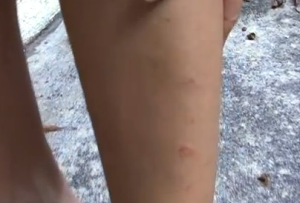Skin rashes occur due to many reasons; one of the known causes is exposure to toxic plants such as poison oak, sumac, and poison ivy. Rash caused due to poison ivy plant is known as poison ivy rash. When a person comes in contact with poison ivy plant it results in adverse reactions causing irritation. An oily resin in this plant known as ‘urushiol’ causes irritation and later triggers the development of poison ivy rash.
Another name for poison ivy rash is ‘allergic contact dermatitis.’ Patients may often exhibit uneasiness, anxiety, and other emotional problems due to rash development. Anyways, it is not fatal and does not cause serious problems. Itchiness may be eradicated by following self-care measures and intake of medications. However, care should be taken to continue the medical therapy till poison ivy rash is fully gotten rid of and cured.
Symptoms of poison ivy rash
Some common symptoms of poison ivy rash are as follows:
- Severe and continuous itchy feeling is a common symptom of poison ivy rash. It always occurs when a person suffers from this kind of rash.
- The skin becomes deep red especially over the affected skin area where the rash has occurred.
- The affected skin portion may swell due to rash.
- Usually poison ivy rash appears in a straight line wherever the plant has brushed the skin; however, sometimes it may not be straight but extensive. This happens when poison ivy rash is passed on to the affected person through tools, clothes, or pets infected by urushiol.
- From the time a person comes in contact with urushiol, it will take around 12 to 48 hours for development of poison ivy rash. Further this could last for 8 weeks. The condition of the infected person will worsen if he/she has come in contact with a lot of this oily resin, urushiol. Symptoms will be more severe if the affected person has excessive exposure to the toxin of poison ivy plant.
- In serious cases, the rash may spread and affect other portions of the body.
- Blister formation is another symptom which may occur over the affected skin portion.
- In case of serious cases of poison ivy rash, the eyes, mouth, and genitals may also get affected.
- Extreme itching could stimulate increased scratching of skin. This can further facilitate the development of more blisters. Rubbing of blisters could lead to infections and microbial diseases.
- If the condition of blisters worsens, then it may cause release of pus from the blister.


Causes
When a person comes in contact with urushiol, an oily resin released by poison ivy plant, it results in formation of poison ivy rash.
Poison ivy plant is an ordinary plant and looks somewhat like a wild shrub. It may also develop as a plant, or a tree-entwining vine. Each of its stems normally grow with about 3 leaves. The shape of a few leaves can be uneven with saw type edges whereas few other leaves may be with flat borders. The color of the poison ivy plant leaves changes as the season changes; it may become reddish, yellow, or orange, and then fall down. Also off-white or green small flowers may come up along with green colored berries.
Urushiol is an oily resin which is the cause for itchy feeling that accompanies poison ivy rash. When this substance comes in contact with the skin it irritates the skin resulting in severe itchiness. Just a small amount of the oily resin is more than enough to irritate the skin and facilitate the formation of poison ivy rash. Urushiol being an oily resin can stick to anything; also it remains sticky and doesn’t dry easily. Due to this it easily clings to clothing, tools, pet’s fur, and human skin.
Some of the situations through which people can come into contact with the toxin of poison ivy plant, thereby becoming more vulnerable to developing poison ivy rash are given below:
- When a person comes in direct contact with the poison ivy plant, stem, root, berry, or vine it can lead to poison ivy rash
- Poison ivy rash is not infectious. If an infected person comes in contact with another person it will not spread. If the person comes in contact with the toxin of the poison ivy plant, only then it will result in poison ivy rash.
- At times the urushiol is transmitted from boots, tools, clothes, and fur of the pet which have come into contact with the toxin. It may later spread to different the body parts like the hands, legs, etc., when such infected things are used.
Treatment of Poison ivy rash
Some of the treatment methods to get rid of poison ivy rash are listed below:
- Usually poison ivy rash can be treated with OTC self-care medications; the symptoms normally vanish in some weeks.
- Anti-itching topical medicines, cool compress, and oatmeal bath are good to ease itchiness and get relief.
- Person affected by secondary microbial diseases of poison ivy rash can be given oral antibiotics. These medicines should be taken on a continuous basis as per the medical expert’s advice.
- In case of serious cases of poison ivy rash wherein the affected person develops blisters, etc., a doctor may prescribe corticosteroid medicines such as prednisone which need to be taken orally.